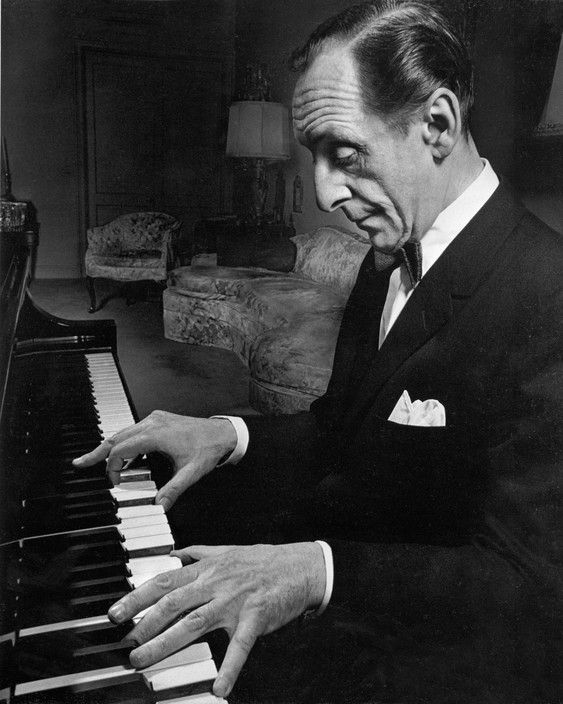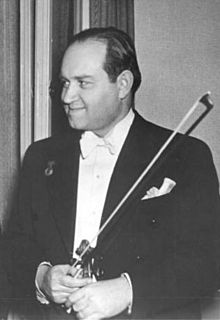September 30, 2019.Horowitz and Oistrakh.Two supremely gifted musicians with very similar beginnings but vastly different career paths were born this week, the pianist Vladimir Horowitz and the violinist David Oistrakh.Both Jewish, they were born in Ukraine, then a part of the Russian Empire: Horowitz in Kiev, on October 1st of 1903, Oistrakh in Odessa, on September 30th of 1908.Rampant anti-Semitism notwithstanding, both were born into rather well-to-do families: Horowitz’s father was an electrical engineer, while Oistrakh’s – a merchant of the “second guild,” the reason both families were allowed to live in large cities outside of the Pale of Settlement.Horowitz’s first pianos teacher was his mother, a pianist; he then attended the Kiev Conservatory where one of his professors was Felix Blumenfled, a brilliant pianist and teacher (Maria Yudina was one of his students).Oistrakh’s talents were also obvious from a very early age; he became a pupil of the famous Pyotr Stolyarsky, the founder of the Odessa school of violin playing (among Stolyarsky’s students were Nathan Milstein, Boris “Busya” Goldstein, Elizabeth Gilels and other future stars; Milstein, Oistrakh’s good friend, was a link to Horowitz, as just several years later the two of them extensively toured the country together).Oistrakh entered the Odessa Conservatory in 1923, graduating in 1926, at the age of 18.By the mid-1920s both Horowitz and Oistrakh were already famous.Horowitz played more than 150 different pieces during his “Leningrad series” in November 1924 – January 1925; the breadth of the repertoire and the quality of his playing were “stunning” – that’s how the Culture minister, Lunacharsky, characterized the concerts in one of his anonymous reviews.The younger Oistrakh was also playing widely, but mostly in Ukraine.The mid-20s is when their careers took very different turns.In 1925, Horowitz received permission to go to Germany, ostensibly to study; he stayed in the West and returned to the Soviet Union only 60 years later, on a belated but triumphal tour.For several years he performed all over Europe, with enormous success (in 1926, during his Paris Opera concert, the gendarmes were called in to pacify the overexcited crowd which started smashing the seats).Horowitz’s calling card was Tchaikovsky’s First Piano concerto.That was the piece he played during his debut concert with the New York Philharmonic under the direction of Thomas Beecham.Here’s what happened during that concert: “Horowitz broke from Beecham’s stately tempo and charged to the finale several measures before the orchestra. The result was, at once, vulgar and exhilarating, and Beecham fumed at the podium as the audience shouted their appreciation for Horowitz. Critics, too, overlooked his questionable taste and bestowed wild praise on his spellbinding technique” (from encyclopedia.com).In 1933 Horowitz married Arturo Toscanini’s daughter Wanda; they settled in the US in 1939.Horowitz’s phenomenal career continued but with interruptions: a neurotic, he did not play in public between 1936-38, 1953-65 and 1969-74.Horowitz is remembered mostly for his superhuman technique, but we shouldn’t forget his singing sound, the unique color he could produce in any piece, no matter how technically challenging.Here’s the 1930 recording of Liszt’s Etude no. 2in E-flat Major s 14/2 (after Paganini’s Caprice no. 17).
David Oistrakh’s career was indeed very different.In 1927 he moved to Moscow; in 1935 he won the 2nd All-Soviet Performer’s competition, that same year he received the 2nd prize at the Wieniawski competition (after Ginette Neveu) and two years later won the Ysaÿe International competition.He was acknowledged as the no. 1 Soviet violinist, a very special position in the country were arts were state-sponsored and politicized.Oistrakh was allowed to tour the West (he went to the US in 1955 and performed to great success) and was given numerous awards.Oistrakh’s technique was impeccable, the sound – powerful, and while he may not have been the warmest player, his sense of style was impeccable.Here’s David Oistrakh performing live in 1954: La Campanella from Paganini’s Violin Concerto.
Horowitz and Oistrakh, 2019
September 30, 2019. Horowitz and Oistrakh. Two supremely gifted musicians with very similar beginnings but vastly different career paths were born this week, the pianist Vladimir Horowitz and the violinist David Oistrakh. Both Jewish, they were born in Ukraine, then a part of the Russian Empire: Horowitz in Kiev, on October 1st of 1903, Oistrakh in Odessa, on September 30th of 1908. Rampant anti-Semitism notwithstanding, both were born into rather well-to-do families: Horowitz’s father was an electrical engineer, while Oistrakh’s – a merchant of the “second guild,” the reason both families were allowed to live in large cities outside of the Pale of Settlement. Horowitz’s first pianos teacher was his mother, a pianist; he then attended the Kiev Conservatory where one of his professors was Felix Blumenfled, a brilliant pianist and teacher (Maria Yudina was one of his students). Oistrakh’s talents were also obvious from a very early age; he became a pupil of the famous Pyotr Stolyarsky, the founder of the Odessa school of violin playing (among Stolyarsky’s students were Nathan Milstein, Boris “Busya” Goldstein, Elizabeth Gilels and
Horowitz and the violinist David Oistrakh. Both Jewish, they were born in Ukraine, then a part of the Russian Empire: Horowitz in Kiev, on October 1st of 1903, Oistrakh in Odessa, on September 30th of 1908. Rampant anti-Semitism notwithstanding, both were born into rather well-to-do families: Horowitz’s father was an electrical engineer, while Oistrakh’s – a merchant of the “second guild,” the reason both families were allowed to live in large cities outside of the Pale of Settlement. Horowitz’s first pianos teacher was his mother, a pianist; he then attended the Kiev Conservatory where one of his professors was Felix Blumenfled, a brilliant pianist and teacher (Maria Yudina was one of his students). Oistrakh’s talents were also obvious from a very early age; he became a pupil of the famous Pyotr Stolyarsky, the founder of the Odessa school of violin playing (among Stolyarsky’s students were Nathan Milstein, Boris “Busya” Goldstein, Elizabeth Gilels and other future stars; Milstein, Oistrakh’s good friend, was a link to Horowitz, as just several years later the two of them extensively toured the country together). Oistrakh entered the Odessa Conservatory in 1923, graduating in 1926, at the age of 18. By the mid-1920s both Horowitz and Oistrakh were already famous. Horowitz played more than 150 different pieces during his “Leningrad series” in November 1924 – January 1925; the breadth of the repertoire and the quality of his playing were “stunning” – that’s how the Culture minister, Lunacharsky, characterized the concerts in one of his anonymous reviews. The younger Oistrakh was also playing widely, but mostly in Ukraine. The mid-20s is when their careers took very different turns. In 1925, Horowitz received permission to go to Germany, ostensibly to study; he stayed in the West and returned to the Soviet Union only 60 years later, on a belated but triumphal tour. For several years he performed all over Europe, with enormous success (in 1926, during his Paris Opera concert, the gendarmes were called in to pacify the overexcited crowd which started smashing the seats). Horowitz’s calling card was Tchaikovsky’s First Piano concerto. That was the piece he played during his debut concert with the New York Philharmonic under the direction of Thomas Beecham. Here’s what happened during that concert: “Horowitz broke from Beecham’s stately tempo and charged to the finale several measures before the orchestra. The result was, at once, vulgar and exhilarating, and Beecham fumed at the podium as the audience shouted their appreciation for Horowitz. Critics, too, overlooked his questionable taste and bestowed wild praise on his spellbinding technique” (from encyclopedia.com). In 1933 Horowitz married Arturo Toscanini’s daughter Wanda; they settled in the US in 1939. Horowitz’s phenomenal career continued but with interruptions: a neurotic, he did not play in public between 1936-38, 1953-65 and 1969-74. Horowitz is remembered mostly for his superhuman technique, but we shouldn’t forget his singing sound, the unique color he could produce in any piece, no matter how technically challenging. Here’s the 1930 recording of Liszt’s Etude no. 2in E-flat Major s 14/2 (after Paganini’s Caprice no. 17).
other future stars; Milstein, Oistrakh’s good friend, was a link to Horowitz, as just several years later the two of them extensively toured the country together). Oistrakh entered the Odessa Conservatory in 1923, graduating in 1926, at the age of 18. By the mid-1920s both Horowitz and Oistrakh were already famous. Horowitz played more than 150 different pieces during his “Leningrad series” in November 1924 – January 1925; the breadth of the repertoire and the quality of his playing were “stunning” – that’s how the Culture minister, Lunacharsky, characterized the concerts in one of his anonymous reviews. The younger Oistrakh was also playing widely, but mostly in Ukraine. The mid-20s is when their careers took very different turns. In 1925, Horowitz received permission to go to Germany, ostensibly to study; he stayed in the West and returned to the Soviet Union only 60 years later, on a belated but triumphal tour. For several years he performed all over Europe, with enormous success (in 1926, during his Paris Opera concert, the gendarmes were called in to pacify the overexcited crowd which started smashing the seats). Horowitz’s calling card was Tchaikovsky’s First Piano concerto. That was the piece he played during his debut concert with the New York Philharmonic under the direction of Thomas Beecham. Here’s what happened during that concert: “Horowitz broke from Beecham’s stately tempo and charged to the finale several measures before the orchestra. The result was, at once, vulgar and exhilarating, and Beecham fumed at the podium as the audience shouted their appreciation for Horowitz. Critics, too, overlooked his questionable taste and bestowed wild praise on his spellbinding technique” (from encyclopedia.com). In 1933 Horowitz married Arturo Toscanini’s daughter Wanda; they settled in the US in 1939. Horowitz’s phenomenal career continued but with interruptions: a neurotic, he did not play in public between 1936-38, 1953-65 and 1969-74. Horowitz is remembered mostly for his superhuman technique, but we shouldn’t forget his singing sound, the unique color he could produce in any piece, no matter how technically challenging. Here’s the 1930 recording of Liszt’s Etude no. 2in E-flat Major s 14/2 (after Paganini’s Caprice no. 17).
David Oistrakh’s career was indeed very different. In 1927 he moved to Moscow; in 1935 he won the 2nd All-Soviet Performer’s competition, that same year he received the 2nd prize at the Wieniawski competition (after Ginette Neveu) and two years later won the Ysaÿe International competition. He was acknowledged as the no. 1 Soviet violinist, a very special position in the country were arts were state-sponsored and politicized. Oistrakh was allowed to tour the West (he went to the US in 1955 and performed to great success) and was given numerous awards. Oistrakh’s technique was impeccable, the sound – powerful, and while he may not have been the warmest player, his sense of style was impeccable. Here’s David Oistrakh performing live in 1954: La Campanella from Paganini’s Violin Concerto.